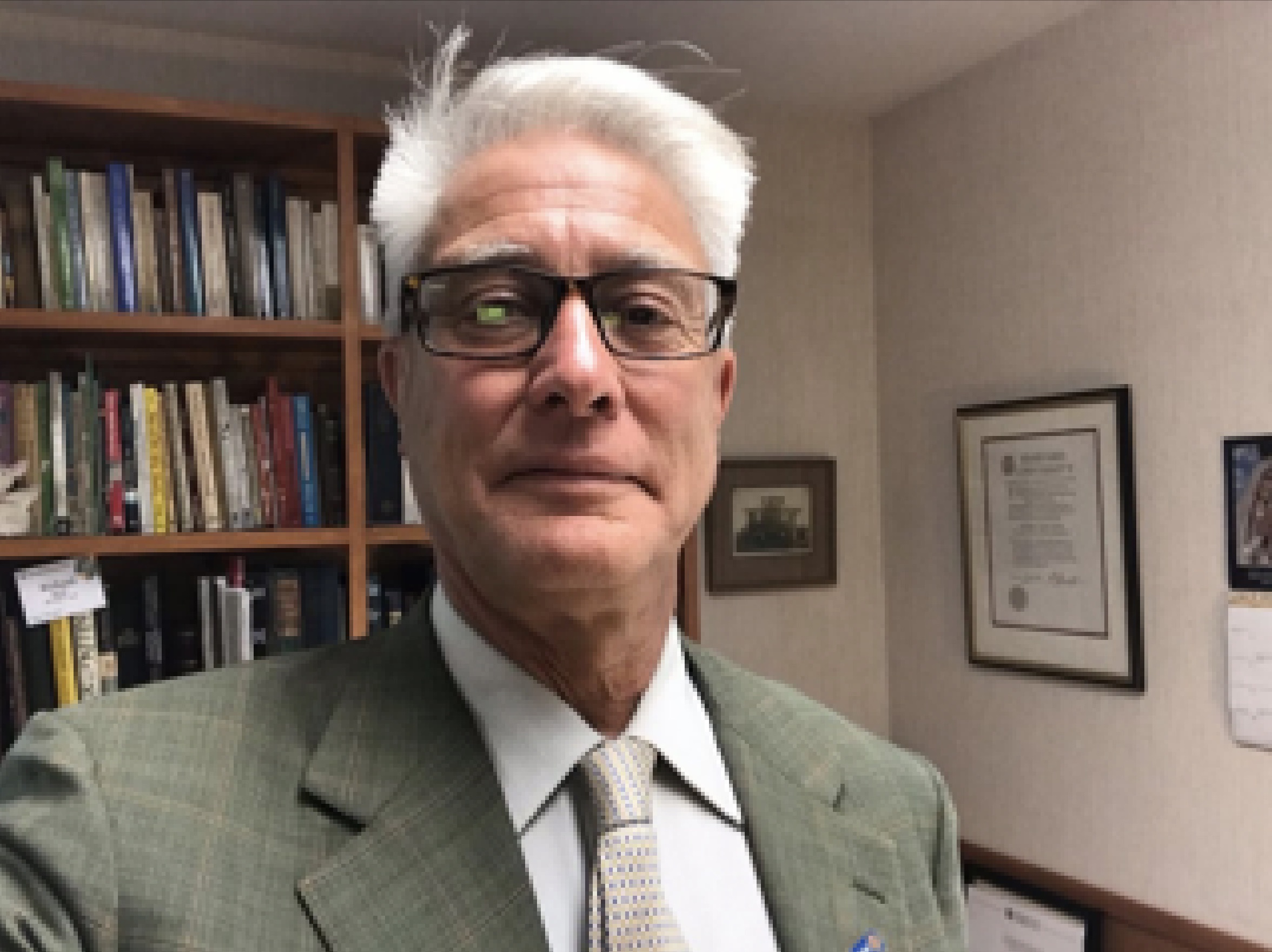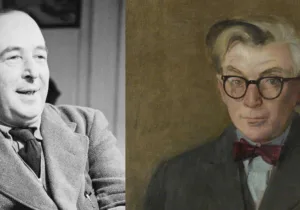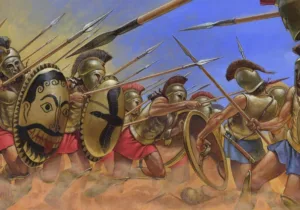A long time ago in a land far away, some twenty years of civil war raged between conservatives and progressives; between land-owners with ancient titles and an increasingly powerful commercial class; between rural authorities and city dwellers; between a traditional religion based on rites and rituals and a new religion based on critical reading skills and modern means of communication; war that bitterly divided the entire country. The war was brought to a partial end by a military genius, a battlefield general, who was also a man of biblical literacy and unshakeable faith; absolutely convinced that the hand of Providence was on his side, yet resolutely modern in his methods.
Most people hoped after so many years of war that the peace he inaugurated by becoming head of state would last, yet he ruled only a handful of years before dying in his late fifties. After he was buried with all the pomp and reverence due a king, although he refused the title, people naturally wondered what sort of memorial should be erected to his memory. The question was not answered then, for within two years of his death, the son of his bitter enemy took power. The body of the military genius and ruler was dug up, along with two of his comrades in arms, hanged in chains, decapitated, and the heads displayed on pikes outside the main government building. One must note that people played for keeps in those days. Only then did the English Civil War end.
Nonetheless, a fine likeness of General Oliver Cromwell, ruler of all of Great Britain, Lord Protector from 1653 to 1658, now stands on a pedestal outside the Houses of Parliament in London.
The statue dates back to 1899, 250 years after the Lord Protector’s birth. Parliament had been deadlocked over the statue, but when a private anonymous donor offered to pay for it, Parliament approved the location. And up it went: a likeness of Cromwell clad as a country gentleman with a sword in one hand and a Bible in the other. Several other depictions, in both stained glass and stone, remain in public view: in Manchester, Cambridge, St. Ives, and elsewhere. All were generally opposed by conservatives, royalists, and Roman Catholics, remembering that their ancestors had backed King Charles I during the Civil Wars; all were generally supported by liberals whose ancestors were the Puritans and middle classes who backed Parliament. Queen Victoria was not pleased with the statue of Cromwell placed in Manchester in 1875. Former Liberal Prime Minister Lord Rosebery spoke at the dedication of the Westminster statue in 1899; Her Majesty did not attend. Parliament has not heeded periodic calls for the statue’s removal, the latest and most serious in 2008.
Thus the general battle lines of Great Britain’s Civil Wars of the seventeenth century remain. One side has seen Cromwell as a modernizer, reformer, and promoter of democratic government; the other, as a ruthless killer who slaughtered entire towns and garrisons, particularly in Ireland. No less an authority than Winston Churchill wrote in his History of the English-Speaking Peoples: “The consequences of Cromwell’s rule in Ireland have distressed and at times distracted English politics down even to the present day. They became for a time a potent obstacle to the harmony of the English-speaking people through-out the world. Upon all of us there still lies ‘the curse of Cromwell.’”
As William Faulkner said, “The past is never dead. It’s not even past.”
How should controversial leaders, after the passing of time, be remembered? With ceremonial execration, a prominent statue, or, perhaps, eventually, both? And what about the victims of history, those who were often forgotten and not publicly memorialized in bronze or stone? For most of history, monuments were for the winners. The modern, and still biblical, passion for justice now wants to bring down the mighty and lift up the lowly. But how? Depicting the victims of the sins of history is a particularly thorny modern problem. Lewis Mumford famously wrote, “The notion of a modern monument is veritably a contradiction in terms; if it is a monument, it is not modern, and if it is modern, it cannot be a monument.”
How do we Americans now wish to memorialize our Civil War and its aftermath? Our Civil War has distressed and at times distracted American politics down even to the present day. Attitudes toward the Civil War remain a potent obstacle to the harmony of our nation. Upon all of us there still lies the curse of slavery and the war that ended it.
What shall we do with the thousands of memorials to Confederate officers and men all over the south, and the schools, parks, and streets named for them? The many statues of Jefferson Davis and other politicians? Do we want all these statues removed and all schools and parks renamed? Do we want Confederate leaders’ burial places and homes and birthplaces either eradicated or obscured to make sure that they and their cause are no longer venerated? Just how far do we want to go?
Further, not just who or what, but how shall we commemorate what has been inadequately commemorated? If we are getting weary of memorials in Washington and elsewhere of generals on horses, for example, of which there are indeed a great many, what do we want to add to them or replace them with? And in what style?
Civil War generals usually got their likenesses in bronze in their uniforms atop horses on marble plinths. Soldiers got their stone memorials on battlefields, in cemeteries, and in town squares all over the states that took part in the Civil War. Is the time for such monumentalism past? How should we depict more recent heroes? We no longer depict anyone but jockeys on horses. Simple statues of any kind now seem inadequate to the type of story we wish to tell in public space. Memorials have expanded so much in the events and background they attempt to cover that the distinction between a memorial and an outdoor museum is getting very blurry.
Let me offer in this brief article some considerations.
Every public statue now in place in the US got there because of contemporary public support and by act of the appropriate legislative body. It is a very serious thing to overrule the wishes of people who are no longer around to defend their decision. Further, if we manage to put up a monument to one of our recent heroes, or victims, we hope that it will stay there. If we tear down too many, what makes us think the ones we put up will remain standing a hundred years hence?
If we wish to overrule the decision of federal, state, or local legislative bodies, we had better have a substantial majority. And we should never encourage mob action to speed the process up, if for no other reason than that mobs who tear down statues of people may well come after living people next.
Two statues of General Robert E. Lee have been removed by order of the city councils of Richmond and Charlottesville, Virginia. These city councils apparently have the authority to decide what they wish. Let us accept the irony of history that the attempt to preserve the Charlottesville statue on the part of some of its defenders—remember the iconic photo of someone suspended in mid-air above the car that plunged, and not by accident, into the crowd—certainly contributed to the sentiment leading to the removal of these statues. There is a lesson here.
If the statue of President Andrew Jackson in Lafayette Square ever comes down, it will be in spite of the attempt to destroy it in the summer of 2020, not because of it. Let me be clear that I believe this statue should remain where it is, as I have already written in this magazine. It is a great work of art, America’s first equestrian statue ever and the first statue of any kind ever placed in Washington. The people who vandalized it face criminal charges, as they should, as should the vandals who attacked the Capitol the following January. Congress will decide whether the statue remains or goes.
Think more in terms of adding statues and memorials before tearing the current ones down, especially by mob action, whatever the motivation for the statues some 50 or 100 years ago. By all means mark gross miscarriages of justice, extra-judicial executions, and mass killings where they took place, and in museums where the story of these events can be told. Mark good deeds as well as bad. Add memorials to former slaves who died on battlefields. The many African-American soldiers of the Civil War, despite the splendid Shaw memorial on Boston Common and in the Smithsonian, are inadequately memorialized. Add statues of Civil Rights-era heroes. Find a way to memorialize Andrew Jackson’s many misdeeds. It is a story that needs telling, but leave his statue where it is.
Make modest public monuments. Allow the public to draw their own conclusions. Do not preach, lecture, or scold. Keep it simple. If people do not recognize that man on the horse or that art object, they can now find ample information on their cell phones. If you want to explain more or make an argument, build a museum. What has been said about statutes applies equally well to statues: long after debate about its intent, the statue will mean what it says.
Be sensitive as to whether a memorial is on a battlefield, in a cemetery, or in a prominent public place. War memorials, to generals, to ordinary soldiers, belong in cemeteries and on battlefields. Leave them there. Statues of Confederate generals removed from prominent public places could be placed in the cemeteries where they lie buried, or on battlefields where they saw service. There is no statue of Robert E. Lee at Appomattox. Put one of his recently removed statues there. Confederate President Jefferson Davis would have fought on in April of 1865, but without Lee’s Army and reputation, he could not. We should publicly honor Lee because he surrendered and we Americans have a long history of magnanimity in victory. The tragedy of American history is that so many white southerners did not follow his example and so many white northerners, weary of war, went along with them.
I meant to end this article here, with magnanimity in victory. But a statue of Lee at Appomattox without one of Ulysses S. Grant will not do. We will have to place one there of Grant as well. We could make a copy of the one at the base of Capitol Hill. It is a fine likeness. Then we should add a statue of a Civil War soldier who deserves more attention. Lieutenant Colonel Ely Parker, a member of the Seneca nation, was present at Appomattox Court House as secretary to General Grant. The surrender documents are in Parker’s handwriting. As General Lee shook hands with everyone afterward, he said to Parker, “I am glad to see one real American here.” Parker replied, “We are all Americans.”







 Live in the DC area? Sign-up for Providence's in-person events list!
Live in the DC area? Sign-up for Providence's in-person events list!